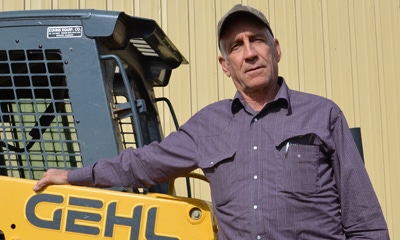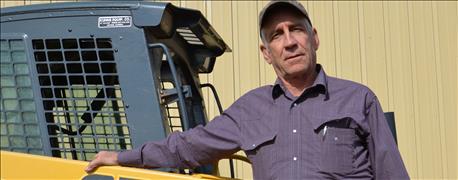
Some key leaders who pushed to form the Conservation Cropping Systems Initiative farm lots of acres. They include Kenny Cain, Crawfordsville, and Ray McCormick, Vincennes. You hear a lot about Mike Starkey, Brownsburg, and his neighbor, Jack Maloney, pioneers in both no-till and cover crops.
Who you may never have heard of is Les Zimmerman, Clinton. His tenant raises corn and soybeans on his farm, but crop farming is not what Zimmerman is all about. He operated a tree nursery for roughly 30 years, selling trees for landscaping within a 150-mile radius. He’s phasing out of the tree business as retirement approaches.
Unlikely beginning

BIG BELIEVER: Les Zimmerman worked countless hours to help create what is today the soil health movement.
So how did a nurseryman become a key component in the effort that launched Conservation Cropping Systems Initiative (CCSI), a thriving soil health program that put Indiana on the national map? No-till and cover crops are key ingredients in the soil health movement, and Indiana leads the way.
“I was interested in the environment and conservation, but I had never been active in a soil conservation organization,” Zimmerman relates. “Someone asked me to join the Vermillion County Soil and Water Conservation District board of supervisors. I agreed, and began getting involved.”
That was 15 years ago. Zimmerman served as chairman of the Vermillion County SWCD three different times. He’s an immediate past director of the Indiana Association of Soil and Water Conservation Districts.
IASWCD recognized him as this year’s Supervisor of the Year. He has installed plenty of conservation measures and has ventured into alternative energy, installing solar panels to generate electricity. But he will be best remembered for his efforts to nurture the fledgling soil health movement into a blossoming major force.
Soil health initiative
“One big benefit of working with SWCDs has been meeting great conservationists like McCormick, Cain, Starkey, Maloney and also Barry Fisher, with the Natural Resources Conservation Service,” Zimmerman says. “Many of us thought that if farmers could try cover crops with their conservation tillage systems, they would see benefits.
“Maybe we didn’t call it soil health, but we knew that if farmers did these things, the soil would improve. That’s where it all started.”
Behind the scenes Zimmerman and company worked quietly, obtaining first one grant and then another. There were plenty of partners, including the NRCS, National Wildlife Federation, IASWCD, Indiana State Department of Agriculture’s Division of Soil Conservation, Indiana State Soil Conservation Board, Conservation Technology Information Center and more, he notes.
One grant led to another until the partnership received a grant large enough to set up CCSI, with education specialists, training sites and a dozen hub farms to demonstrate practices. Purdue University Extension’s Eileen Kladivko plays a major role in analyzing benefits of cover crops to soil health as part of the grant.
“We have more to do, but we’ve made a good start,” Zimmerman says.
About the Author(s)
You May Also Like




